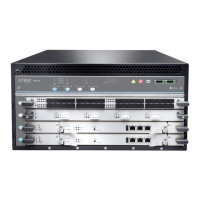Figure 15: RE-S-X6-64G-LT Routing Engine Front View
6—1—
ONLINE/OFFLINE Button
Extractor clips
7—2—
SSD LEDs—DISK1 and DISK2Auxiliary port (AUX)
8—3—
Ports—USB1 and USB2Console port (Con)
9—4—
RESET ButtonManagement port (MGMT)
10—5— SSD card slot cover
LEDs—ONLINE, OK/FAIL, and MASTER
RE-S-X6-64G and RE-S-X6-64G-LT Routing Engine Components
In MX240 routers with dual Routing Engines, both the Routing Engines must be
RE-S-X6-64G Routing Engines.
Each RE-S-X6-64G Routing Engine (shown in Figure 14 on page 24) consists of the
following components:
•
CPU—Runs Junos OS to maintain the routing tables and routing protocols.
•
EEPROM—Stores the serial number of the Routing Engine.
•
DRAM—Provides storage for the routing and forwarding tables and for other Routing
Engine processes.
•
One 10-Gigabit Ethernet interface between Routing Engine and Switch Control Board.
•
Two 50 GB slim Solid State Drives—SSD1 (primary) and SSD2 (secondary)—Provide
storage for software images, configuration files, microcode, log files, and memory
dumps. The Routing Engine reboots from SSD2 when boot from primary SSD fails.
•
Two USB ports (USB1 and USB2)—Provide a removable media interface through which
you can install Junos OS manually. The Junos OS supports USB versions 3.0, 2.0, and
1.1.
•
Interface ports—The AUX, CONSOLE, and MGMT provide access to management
devices. Each Routing Engine has one 10/100/1000-Mbps Ethernetport for connecting
to a management network, and two asynchronous serial ports—one for connecting to
a console and one for connecting to a modem or other auxiliary device.
•
RESET Button—Reboots the Routing Engine when pressed.
•
ONLINE/OFFLINE Button—Makes the Routing Engine online or offline when pressed.
•
Extractor clips—Control the locking system that secures the Routing Engine.
•
LEDs—“MX240Routing Engine LEDs” on page31 describes the functionsof these LEDs.
25Copyright © 2017, Juniper Networks, Inc.
Chapter 5: Host Subsystem Components and Descriptions

